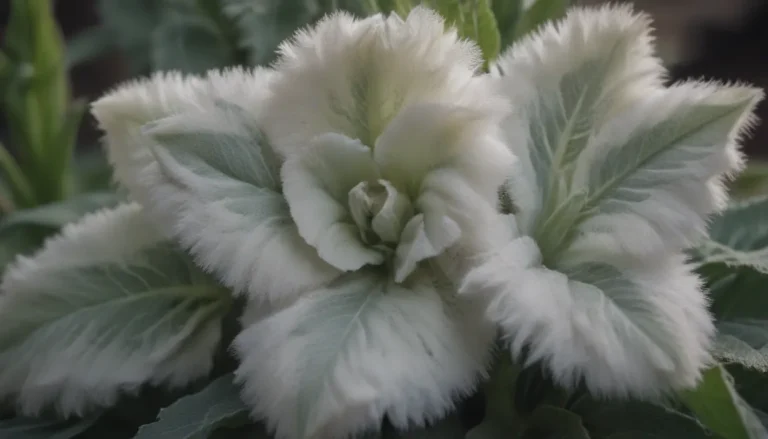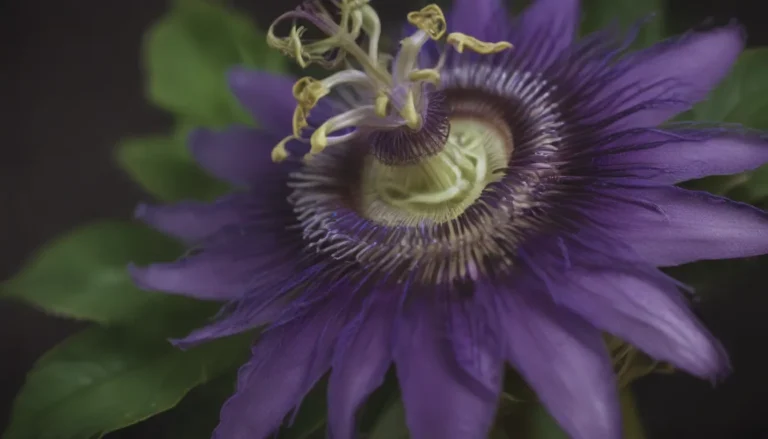Ultimate Guide: How to Grow and Care for ‘Blue Princess’ Holly

Are you looking to add a touch of elegance and charm to your landscape? Look no further than the ‘Blue Princess’ holly. This beautiful female cultivar of the blue holly evergreen shrub is a popular choice for homeowners looking to create a stunning focal point in their gardens.
‘Blue Princess’ holly is well-suited to temperate climates and is perennial to USDA zones 4-7. It thrives in average, well-draining soils and can be grown in full sun or partial shade. Before you rush out to add this lovely shrub to your garden, there are a few key things you need to know about caring for ‘Blue Princess’ holly.
‘Blue Princess’ Holly Care
Here are the main requirements for ensuring your ‘Blue Princess’ holly thrives in your garden:
Light
‘Blue Princess’ holly will grow well in either full sun or partial shade. In warmer climates, it’s best to provide some protection from the harsh afternoon sun to prevent leaf burn.
Soil
Well-drained soil is crucial for the health of ‘Blue Princess’ holly. While they can tolerate a range of soil types, these shrubs prefer slightly acidic to neutral soil with a pH range of 5.0 to 7.0.
Water
During the shrub’s first growing season, it’s essential to deeply water it on a regular basis to establish a healthy root system. Once established, weekly waterings should be sufficient, but be sure to adjust watering frequency during periods of extreme heat, ensuring the soil remains evenly moist without becoming waterlogged.
Temperature and Humidity
‘Blue Princess’ holly can withstand temperatures as low as -20 to -10 degrees Fahrenheit, but prolonged exposure to extreme heat or cold can weaken or kill the plant. Insulating the roots with mulch and planting the shrub in a sheltered location can help protect it from temperature extremes. Additionally, maintaining moderate humidity levels is beneficial for the health of the shrub.
Fertilizer
Minimal fertilization is needed for ‘Blue Princess’ holly. Avoid over-fertilizing with nitrogen, as it can prevent the shrub from fruiting. Opt for an organic holly-specific fertilizer and follow the label instructions. Incorporating compost into the soil at planting time can also provide essential nutrients for healthy growth.
Types of Blue Holly
The “blue” tint of the dark green leaves is what gives blue holly its name. In addition to ‘Blue Princess’ and ‘Blue Prince,’ there are several other female and male blue holly cultivars to consider, including:
- ‘Blue Girl’ (Ilex x meserveae ‘Blue Girl’)
- ‘Blue Boy’ (Ilex x meserveae ‘Blue Boy’)
- ‘Blue Maid’ (Ilex x meserveae ‘Blue Maid’)
- ‘Blue Stallion’ (Ilex x meserveae ‘Blue Stallion’)
- ‘Hachfee’ (Ilex x meserveae ‘Hachfee’)
- ‘Heckenstar’ (Ilex x meserveae ‘Heckenstar’)
Pruning Tips
While ‘Blue Princess’ holly can reach heights of up to 15 feet, regular pruning can help maintain a more manageable size. Prune your holly shrub in early winter if you plan to use the cut stems as decorations, or later in the season if you prefer the berries to remain on the shrub. To maintain a natural appearance, stagger the depth of your cuts and avoid over-pruning, as hollies bloom on old wood produced in the previous growing season.
Propagating ‘Blue Princess’ Holly
Propagation of ‘Blue Princess’ holly is easily achieved through cuttings taken in late spring or early summer. Follow these simple steps to propagate your holly shrub successfully:
- Select healthy stems for cutting.
- Remove the lower leaves and dip the cut end in rooting hormone.
- Place the cutting in moist soil or a rooting medium.
- Keep the cutting consistently moist until roots develop.
Overwintering
Protecting ‘Blue Princess’ holly from winter desiccation is essential, especially in colder climates. Consider wrapping vulnerable shrubs in burlap or providing a wind block to shield them from harsh winter winds. Additional winter protection may be necessary for growers in zones 4 and 5.
Common Pests & Plant Diseases
Keep an eye out for common insect pests such as holly leaf miners, spider mites, whiteflies, and scale, as well as fungal diseases like powdery mildew, leaf spot, and tar spot. Provide adequate air circulation and sunlight, water at the base of the shrub, and consider using fungicides to prevent and treat these issues.
Ensuring Bloom for ‘Blue Princess’ Holly
As dioecious plants, holly shrubs like ‘Blue Princess’ require both male and female cultivars for pollination to produce berries. ‘Blue Princess’ must be pollinated by a male holly shrub, such as ‘Blue Prince,’ to develop its signature berries. If your shrub is not producing berries, lack of pollination or improper pollination timing may be the issue.
Bloom Months: ‘Blue Princess’ Holly typically blooms in spring (April to May) with berries developing in the fall.
Common Problems and Solutions
While holly shrubs are generally resilient, they can experience issues such as yellowing leaves, leaf drop, and burned leaves. Address chlorosis or yellowing leaves with acidic fertilizers or pine needle mulch, treat leaf spot with fungicides, and protect against winter injury to maintain the health of your holly shrubs.
With proper care and attention to its specific needs, ‘Blue Princess’ holly can grace your garden with its beauty for years to come. Whether used as a hedge, specimen plant, or focal point, this stunning shrub is sure to enhance the charm of your outdoor space. So go ahead, plant a ‘Blue Princess’ holly and enjoy its beauty year-round!





